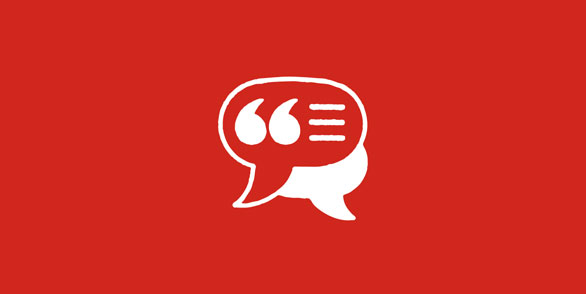Most employers inherently care about how their customers feel about their products or services. But what about the workers who make positive brand interactions possible? In many ways, the employee experience is just as vital to a company’s success as the customer experience. Employees who view their job and workplace environment favorably are often more productive and committed to the company’s mission.
Table of Contents
What is employee experience?
The employee experience is how workers perceive every aspect of their employment journey from the time they are hired to the time they leave the organization. It’s influenced by what they do, see, hear and feel, and can be measured individually or collectively. Both perspectives are helpful to employers who want to build trust with employees and ensure they find meaning and purpose in their work.
Why is employee experience important?
Employee experiences – good or bad – have a way of getting around. Current employees might talk to coworkers and friends, while ex-employees may write a review about their former employer online. The cumulative effect of these discussions can impact workforce morale and productivity, business reputation, and customer service. Employee experiences can also improve or diminish an employer’s ability to attract and retain talent.
Employee experience challenges
Creating positive, meaningful employee experiences is not always easy. Employers who struggle to achieve high engagement scores usually:
- Lack the data necessary to fully understand employee sentiments
- Have technological inefficiencies or too much paperwork
- Assume every employee develops and grows the same way
- Don’t use exit surveys to capture feedback from departing employees
How to design an employee experience strategy
Employee experience strategies start with listening to employees and determining what they need. Then, employers can clarify their value proposition. They must share what makes their workplace culture unique to their industry, the principles they uphold and the benefits they offer to improve employee well-being. When the value proposition is appropriately conveyed, the expectations of new hires will match their personal experiences.
However, the employee experience doesn’t start and end with first impressions. Employers must understand the wants and needs of employees throughout each of the following four phases:
- Hiring and onboarding
- Engagement, growth and development, and retention
- Turnover and offboarding
- Post-employment
How to improve employee experience
Employers can plot improvements to the employee experience using the aforementioned stages as a guide. Within each phase, they should document what their process is missing and what is or isn’t working.
Hiring and onboarding
- Create a branded, mobile-friendly career site that engages candidates
- Use analytics to monitor hiring efficiency and discover new sources of talent
- Know the compliance requirements for locations where hiring is taking place
- Offer a digital onboarding experience that prioritizes candidates’ needs
- Efficiently execute background checks and verifications for employment
Engagement, growth and development, and retention
- Use strength assessments to help leaders and their teams work better together
- Institute weekly, one-on-one check-ins between managers and team members
- Support leaders with an employee engagement platform that has coaching tools
- Track employee engagement at the team level
- Promote diversity, equity and inclusion
- Assess team performance and resolve issues immediately
Turnover and offboarding
- Provide a platform for departing employees to improve their resumes and interview skills
- Allow employees to search for jobs and access live coaching through the platform
- Post helpful resources that can support employees during their transition
- Monitor turnover expenses, such as loss of productivity and recruitment costs
- Adjust retention strategies based on relevant insights
Post-employment
- Deploy a survey solution to track and analyze exit interview responses
- Try to decipher how former employees may talk about the organization publicly
- Address any negative, neutral or non-responses received on the surveys
- Follow-up positive exit interviews with a request for an online review
- Create a network for employee alumni to continue to connect with the company
How to evaluate the employee experience
Employers must monitor the experience they’ve built to ensure it continues to work for their employees. Some tactics at their disposal include:
- Metrics
Within each phase of the employee experience, there is data that can be used to measure success. Poor retention rates, in particular, may be a sign that workers feel negatively about the organization. - Surveys
Employee experience software solutions allow employers to customize engagement surveys and distribute them at crucial moments throughout the employment life cycle. - Focus groups
Surveys are limited to surface-level information. For deeper insights, employers may want to organize focus groups.
Frequently asked questions about the employee experience
How do you build employee experience?
To build a top employee experience, employers must understand what employees see, hear and think about their business. Achieving this knowledge usually requires people analytics and survey solutions. Based on the data acquired, employers can improve their approach to hiring, onboarding, engagement, learning and development, retention and offboarding.
What are the core elements of employee experience management?
Effectively managing each stage of the employee experience requires these core components:
- People – HR practitioners, executive leadership, the collective workforce
- Technology – people analytics, engagement platforms, self-service tools
- Policies – workplace culture, performance expectations
- Practices – processes for hiring, onboarding, offboarding, etc.
What is an example of employee experience design?
Outplacement is an example of how employers design positive employee experiences. These programs may include resume building, networking opportunities and other career resources. The goal is to help departing employees have a long-lasting, positive impression of their former employer.
This article is intended to be used as a starting point in analyzing the employee experience and is not a comprehensive resource of requirements. It offers practical information concerning the subject matter and is provided with the understanding that ADP is not rendering legal or tax advice or other professional services.






